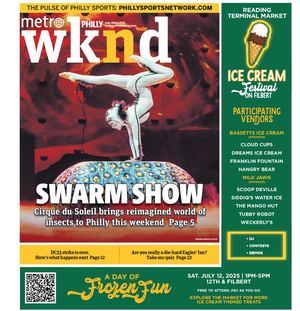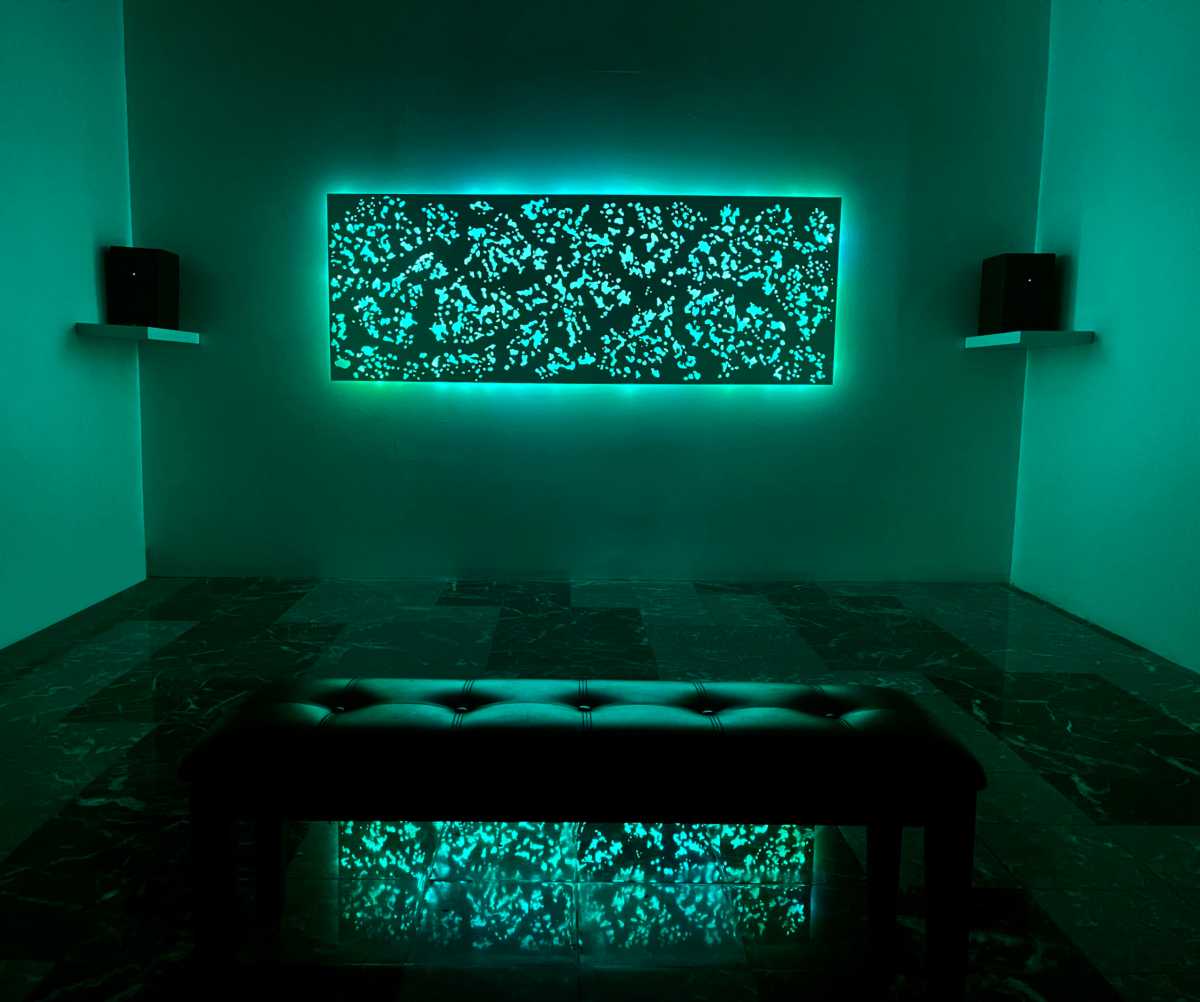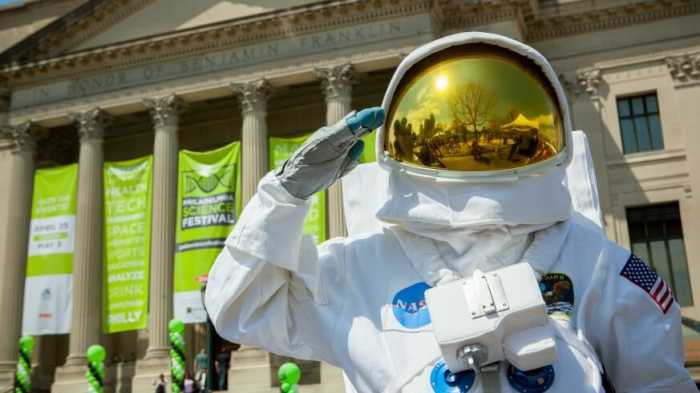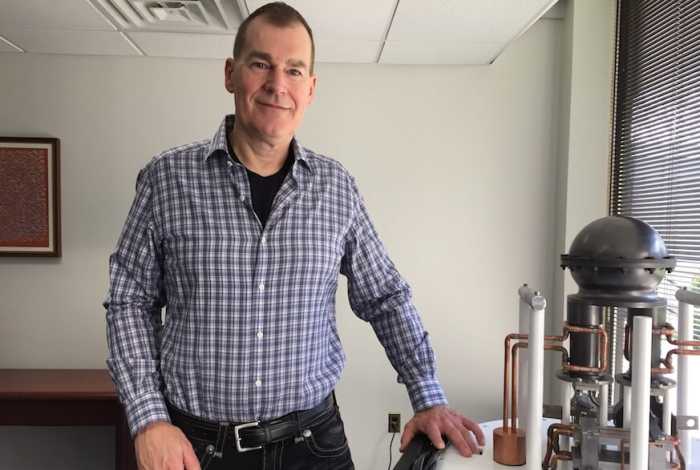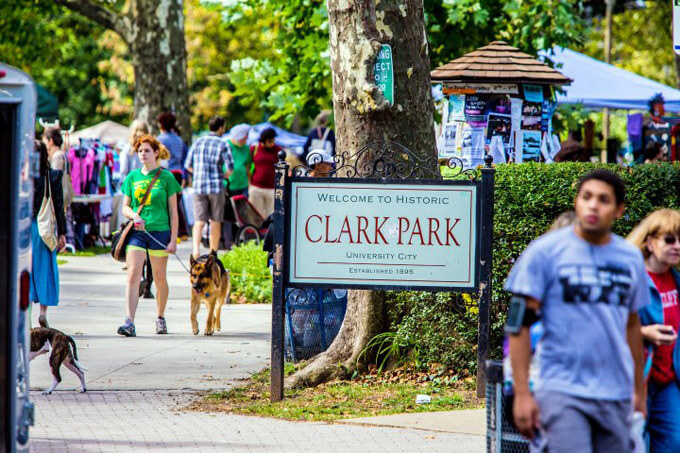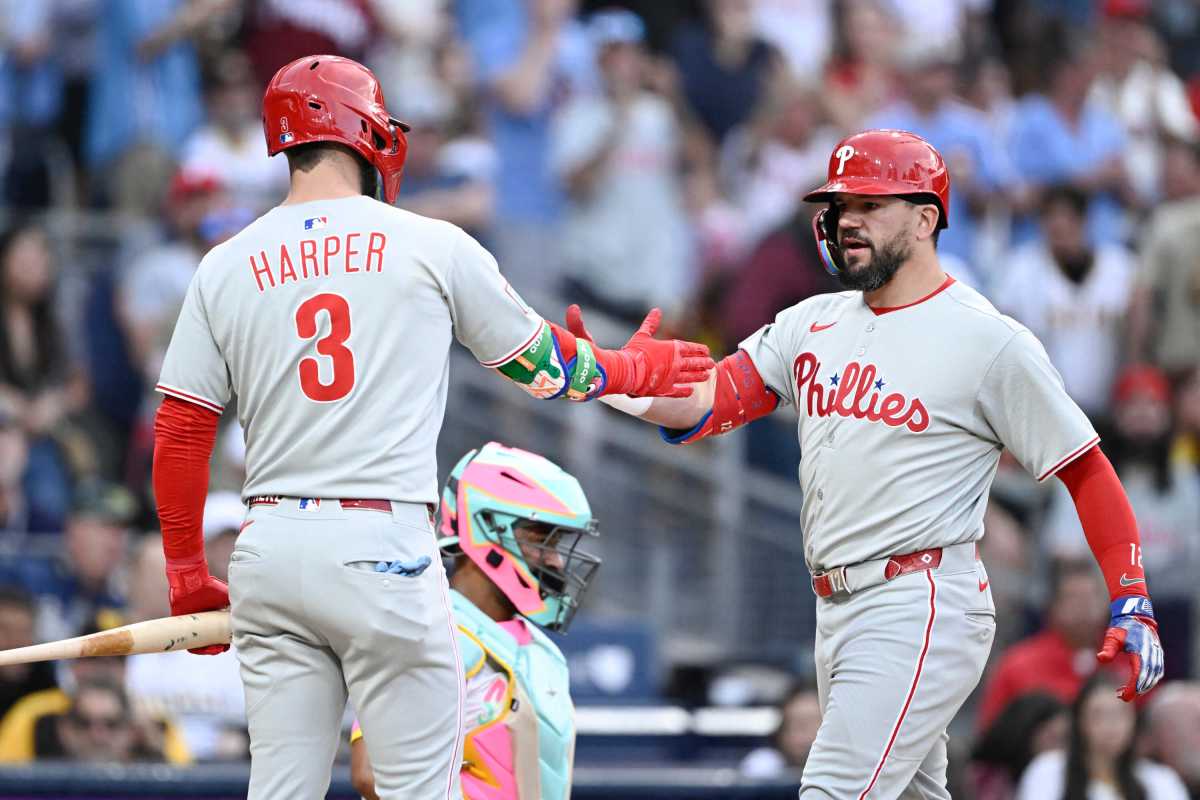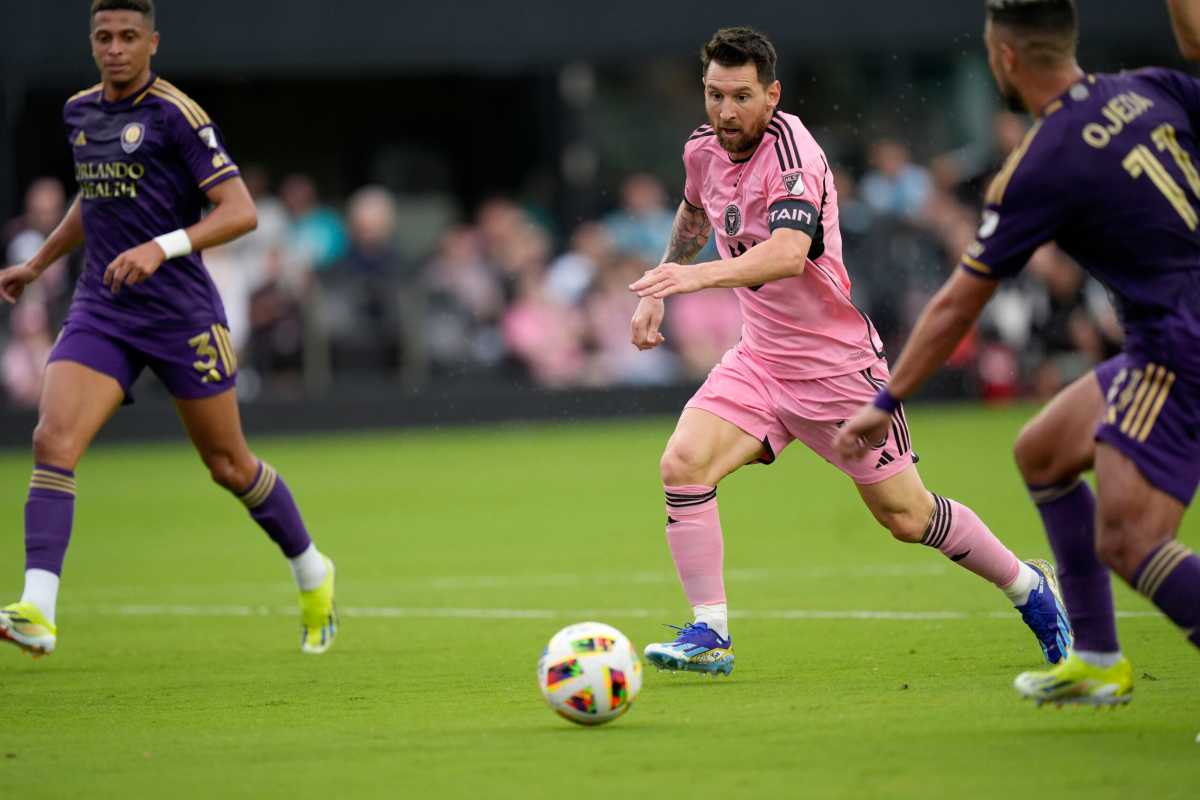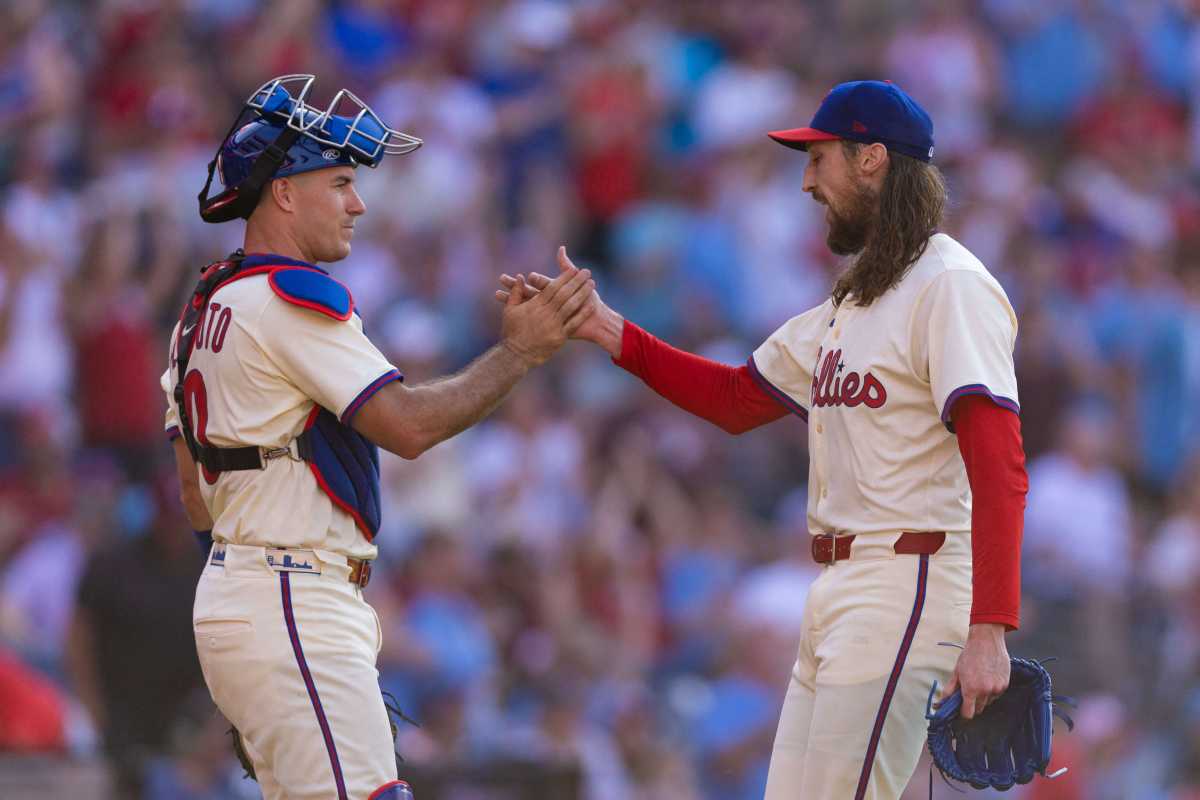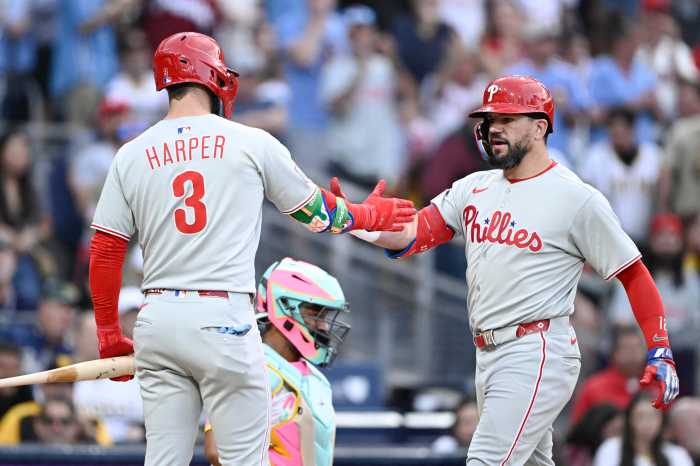In scientific formats, the word socius means ‘companion,’ or a way to create a bond or interaction. In The Science Center’s latest exhibit from artist and muralist Rebecca Rutstein, this word is examined on a molecular level in reference to COVID-19.
“I think one way this ties into other bodies of my work is how patterns repeat themselves on different scales. It was noticeable cells create little micro societies where they are reaching out to each other and communicating…that’s the whole premise of the show,” Rutstein explains. “When looking at the cells, [they] were spreading and creating community [and you see] disease spreading. That’s where all the data came from as well.”
For the past 20 years, Rutstein has created art inspired by biology, microbiology and marine science. In just the last six years, Rutstein was awarded a public art sculpture project in 2015 at Temple University, and a mural installed in 2019 on the AT&T building on the Schuylkill River. Ultimately the artist notes that she enjoys public art because of its effects beyond gallery walls and the way it can cause the public to take a pause from their busy lives.
“As my work evolves I’m becoming more interested in creating digital and immersive experiences that are multisensory,” Rutstein explains.
For her latest work, which is now on display in the Science Center’s Esther Klein Gallery, ‘Socius’, comes from a completed BioArt Residency designed in partnership between the Science Center and the biotech company Integral Molecular, where Rutstein spent three months working alongside laboratory scientists. The culmination of this residency is an exhibit of large and small-scale paintings and a multi-media installation.
According to a release, Rutstein’s work is an exploration of the effects of SARS-CoV-2 virus both at the cellular micro level, and also at a macro level amongst the community.
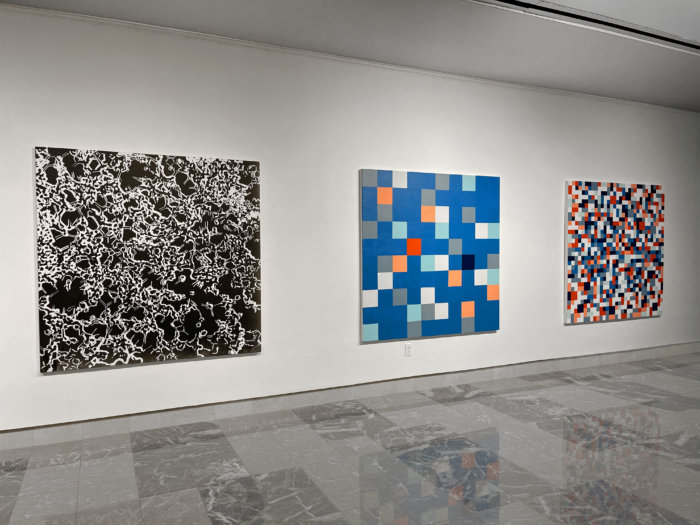
“In terms of the subject matter, it was really quite different for me,” says Rutstein. “In early 2020, they pivoted their early research to this pandemic, so they have really interesting technologies where they can help humans visualize human cells being infected by SARS-CoV-2 where cells become fluorescent when they get infected.”
Rutstein decided to take a micro and macro look at the pandemic. She did this by looking through the microscopic lens at how cells get connected and the kind of network the cells create and also, on a macro level, looking at the data of how COVID-19 is impacting the community. That also meant looking at data in Philadelphia that dealt with cases and vaccinations.
“I wasn’t planning to do a show on COVID-19, my work is not necessarily dealing with such heavy subject matter. I’m really interested in science and creating work that connects people with the natural world, but I’m not necessarily thinking about disease. Because of what they were doing and I was working with them in the lab, I felt like I would be remiss not to address this….this is what is happening right now,” she explains.
What Rutstein was able to do with this exhibit, and an aspect she’s most excited about, is a correlation with data into a sound piece—which means a multi-median installation seen as a backlit sculpture with an LED light program. The sound piece is taking these data sets and assigning each rise and fall in the data set with a note which is then translated into string instruments.
“It creates a really powerful piece that is a different perspective because you’re listening to the data. The data sets I used are from March of 2020 through May of 2021, so of course, it predates the Delta variant which has been a game-changer. But at the time of my data sets at the end of May, cases and deaths had really plummeted in Philadelphia,” says Rutstein. “So, what you’re listening to at the end is the rise of the vaccine. For me, it was a case for vaccine efficacy, a piece of exemplifying that. The late program of the sculpture is actually mimicking time lapse video of these cells progressing through this technology through recorder virus particles.”
Another aspect that ‘Socius’ touches on is on racial demographics in reference to the pandemic.
“I think people can look at data and read data and it’s all very numbing and overwhelming. I do think the sound piece will exemplify that, ” says Rutstein. “I did a couple of paintings that were derived of data sets of people that have died from racial demographics of COVID and also who’s getting vaccinated by race demographically.”
The effects from the exhibit also hit her personally.
“You look at numbers and its numbing. But when you actually make a painting, you’re representing a number in each square as a person. It’s overwhelming…[ but] I’m glad I did it, I pushed myself into a territory that I was uncomfortable with. I think there’s legs for the music component of this, and I think it’s interesting to these data sets. They tell a story through sound. I was really happy for personal growth in terms of where it pushed me creatively into something more immersive.”
It’s the music, however, that compels the narrative of information in a fast trajectory. In terms of a creative standpoint, moving into sound and collaborating with musicians, Rutstein also worked with a composer who is creating a score so that a live string quartet can play at the closing reception, which is Sept. 23. There might even be a symphony that is interested, she notes.
“I feel like there’s a lot of emotion in it and you can really feel it… you can feel the music. You may not know until you read about it what it is, but I think it conveys it pretty well.”
‘Socius’ will be on display until Sept. 24 with the closing reception being held on the 23rd. For more information on The Science Center’s Esther Klein Gallery (3600 Market St.), visit sciencecenter.org
